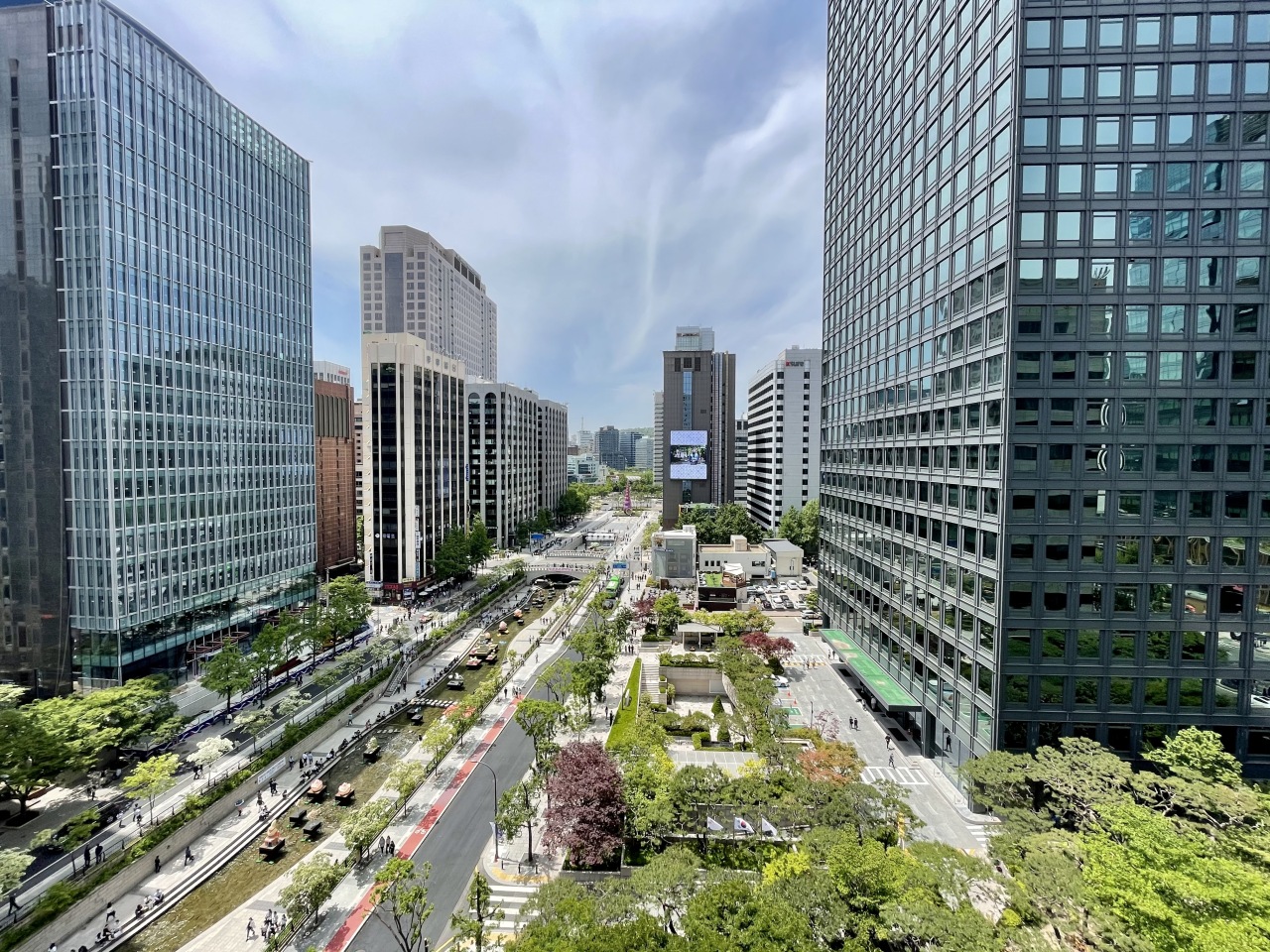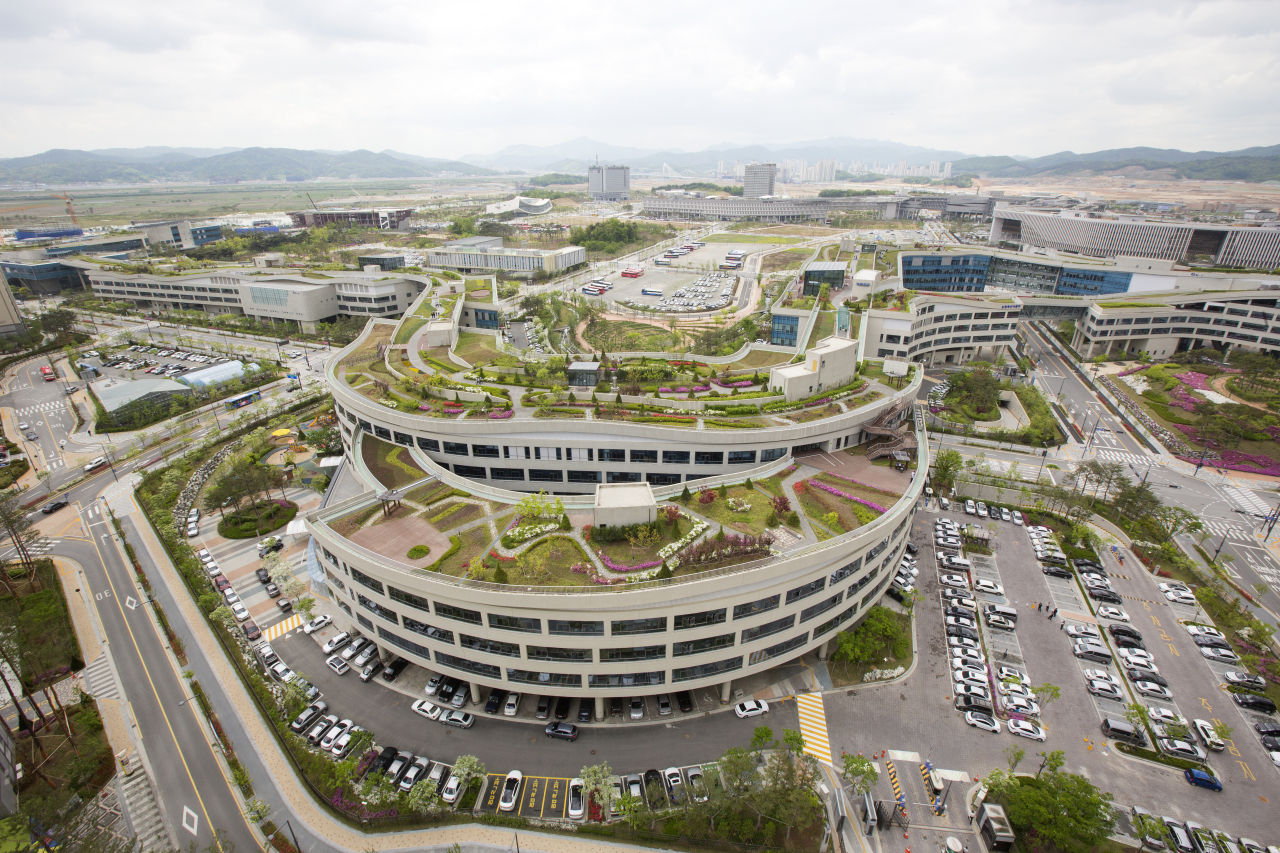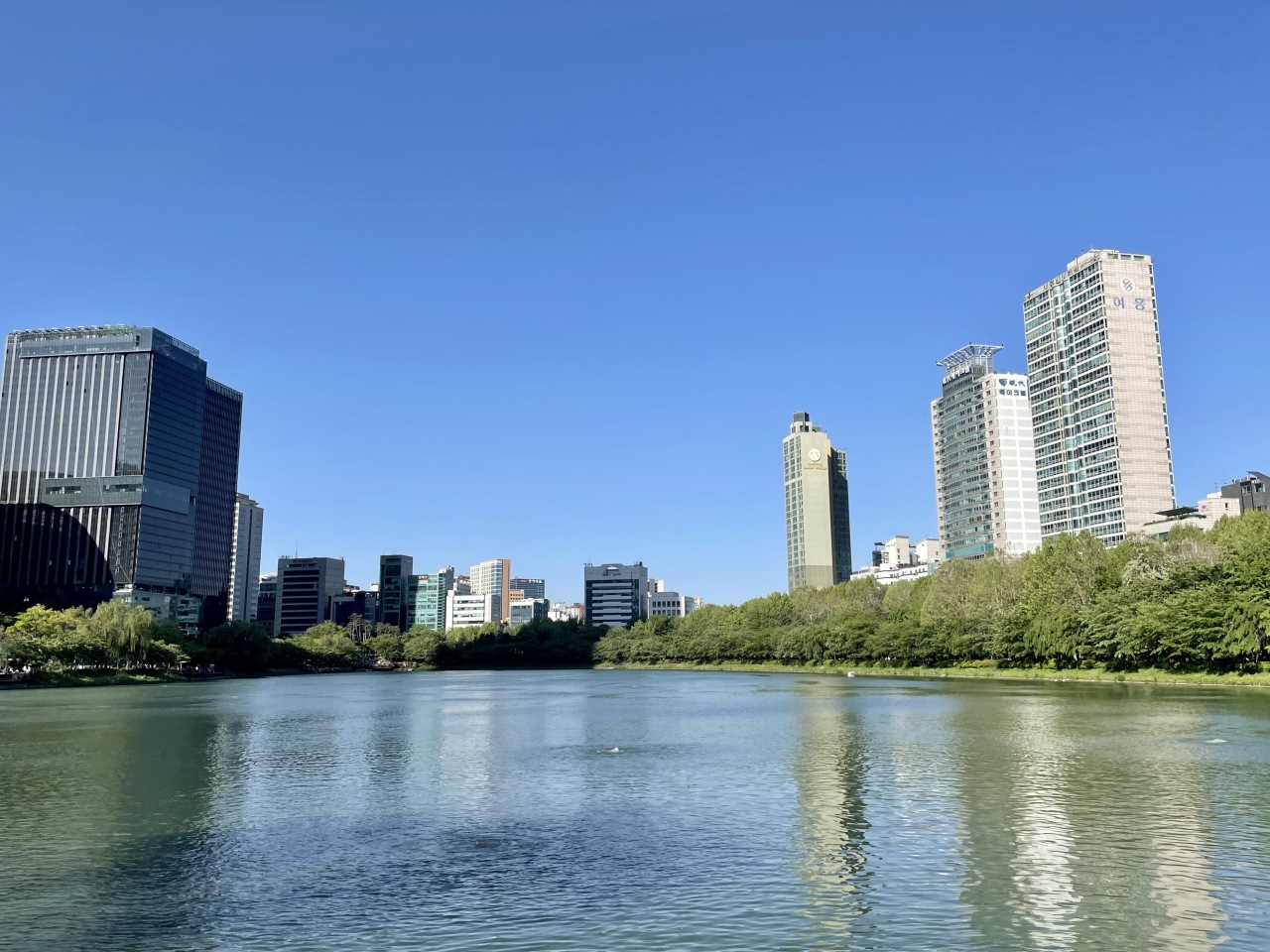 |
Cheonggyecheon and its neighboring buildings in Jongno-gu, central Seoul. Cheonggyecheon is one of few green spaces amid the concrete jungle of central Seoul. (Im Eun-byel / The Korea Herald) |
While going green has become an urgent agenda for many industries from retail, fashion to the performing arts and architecture is no exception.
Amid the climate crisis, more individuals, companies and the government are paying attention to sustainable architecture, aware of the impact of the lasting footprint left by construction.
“Green architecture” refers to an approach to architecture which acknowledges the necessity for improvement in both environmental impact and our health.
While more construction companies are taking part in the sustainable architecture movement, going green costs money.
“Builders are aware of the need to pursue sustainable architecture,” an official who works at a major construction company here said, referring to the Green Standard for Energy and Environmental Design, also known as G-SEED. Construction companies are required to meet this standard before a construction project can take off.
“However, the budget for construction is fixed and tight. The builder must save costs in processes and materials to generate maximum profit. But environmentally friendly materials usually cost a lot,” he said. “Insulation sometimes costs more than a million dollars for an apartment building. It is all about money after all.”
As part of the effort to save construction costs and at the same time go green, the Seoul Metropolitan Government has been leading the “green roof” project from 2002, changing building roofs to green gardens.
The SMG announced in February it would support more buildings to add rooftop garden in order to provide green space for residents and improve the cityscape.
For the past two decades, more than 314,000 square meters of roof space has been turned into gardens, spread over 764 structures. This year, the SMG started funding another 10,000 square meters of rooftop gardens on private buildings. Previously, only public buildings were eligible for the funding.
According to the SMG, the average temperature of buildings with green rooftops dropped by 3.1 degrees Celsius, easing the urban heat island effect. Urban heat island effect refers to the urbanized areas become warmer than the surrounding peripheries, as manmade structures absorb and radiate more heat. Air conditioning and heating energy consumption for buildings went down by 12 to 15 percent on average in buildings with green rooftops.
Another example of a green roof is the rooftop garden at the government complex in Sejong City, which was officially recognized by Guinness World Records as the world’s largest rooftop garden in 2016.
 |
The rooftop garden at Government Complex Sejong (Sejong City) |
The garden, spread out across the complex and connecting the separate buildings by bridges, measures 79,194 square meters and is home to 1.17 million species of plants. The garden also features three trails.
Though the governments and big firms have been showing interest in green architecture over the past several years, it is still difficult for individuals to consider the environmental effect their housing may have.
“I could not really consider green architecture because of the budget,” Kim Su-yeon, who built a house in 2019 in Paju, Gyeonggi Province said. “There were just so many things to consider when building my house, apart from the environment.”
 |
View from Seokchon Lake in Jamsil, eastern Seoul. Seokchon Lake is a popular park in the busy Jamsil area. (Im Eun-byel / The Korea Herald) |
There is also the big question of what really constitutes environmentally friendly housing.
“There is a neighbor who often talks about how eco-friendly his house is,” a retired office worker with the surname of Kang who built his own house in the Gapyeong, Gyeonggi Province said.
Kang was referring to his neighbor who lives in a “passive house,” an ultra-low energy building that requires minimum energy for heating or cooling.
Pointing out that his neighbor heats his house using a special water reserve heating system installed 150 meters underground, Kang asked, “Is that really healthy for the environment?”
“I think it is more environmentally friendly to occupy a minimum possible space for living,” he said.
By Im Eun-byel (
silverstar@heraldcorp.com)










